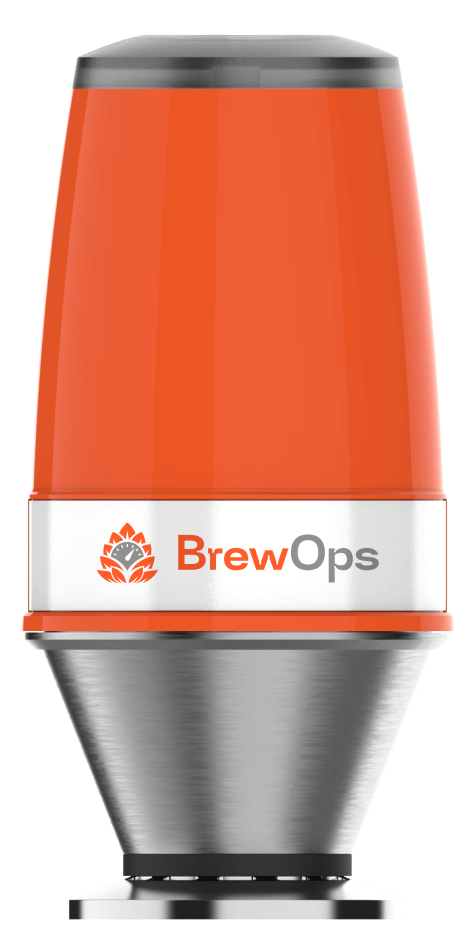Remote monitoring with sensor technology has revolutionized craft brewery operations. Using real-time data to keep an eye on the progress of the fermentation process gives brewers peace of mind and confident decision making—particularly when monitoring specific gravity, which is fundamental for achieving consistent, high-quality beer that meets the brewer’s expectations and the standards of the industry and consumers.
Real-time specific gravity monitoring allows brewers to track the progress of fermentation accurately and make necessary adjustments to ensure the desired quality and flavor of the beer.
What is Specific Gravity?
When it comes to beer brewing, fermentation is where the magic happens. Yeast converts sugars into alcohol and CO2, transforming wort into beer. Monitoring this process in real-time is crucial for crafting the perfect brew.
During fermentation, yeast activity generates CO2, which provides valuable insights into the fermentation’s progress.
Specific gravity measures the density of the liquid compared to water and provides insights into the fermentation’s progress and completion. As yeast consumes sugars and produces alcohol, the specific gravity decreases. Real-time specific gravity monitoring using sensor technology allows brewers to track this change, ensuring that fermentation proceeds as planned. Brewers can determine how much sugar has been fermented, which indicates how much alcohol has been produced.
When specific gravity readings stabilize over a period of days, it indicates that fermentation is complete. This knowledge is crucial for deciding when to move the beer to secondary fermentation, when to package it, or when to perform other necessary steps in the brewing process.
How Sensor Technology Tracks Specific Gravity
Monitoring specific gravity helps ensure consistency in the final product. Deviations from expected readings can indicate problems such as incomplete fermentation, contamination, or other issues that could affect the taste, clarity, or stability of the beer.
Using data provided by simple and affordable sensor technology, brewers can adjust ingredients or processes based on how specific gravity readings correspond to the desired characteristics in the final beer. By tracking specific gravity before and after fermentation, brewers can calculate the alcohol content (ABV) of the finished beer, which is essential for labeling purposes and for ensuring that the beer meets regulatory requirements.
Why Brewers Use Automation to Track Specific Gravity During Fermentation
Using sensor technology to monitor specific gravity is a powerful tool that enhances brewers’ ability to control and optimize every stage of the brewing process. It combines technological advancements with traditional brewing expertise to achieve better results and meet the demands of modern brewing best practices.
Specific gravity monitoring using sensor technology enhances the brewing process in seven significant ways:
- Immediate Insight into Fermentation Progress. Instead of relying on periodic sampling, real-time monitoring provides continuous data on how specific gravity changes over time. Brewers can observe the rate of fermentation and detect any abnormalities early, allowing for timely adjustments, if necessary.
- Timing Precision. Real-time data allows brewers to pinpoint the exact moment when fermentation is complete or nearing completion. This accuracy is crucial for determining when to transfer the beer, add additional ingredients (such as dry hops), or begin the conditioning phase.
- Optimizing Fermentation Conditions. By monitoring specific gravity in real time, brewers can optimize fermentation conditions such as temperature and yeast activity. Adjustments can be made promptly based on how specific gravity readings evolve, ensuring yeast health and fermentation efficiency.
- Quality Control and Consistency. Sensor technology helps to maintain consistency across batches. Brewers can compare current readings with historical data to ensure that fermentation progresses consistently with previous successful brews.
- Early Detection of Issues. Deviations in specific gravity trends can indicate potential issues such as yeast stress, contamination, or incomplete fermentation. Real-time monitoring using sensor technology allows brewers to intervene promptly, potentially saving a batch from developing off-flavors or other defects.
- Data-Driven Decision Making. The data collected can inform future brewing decisions. Brewers can analyze trends and correlations between specific gravity, ingredient variations, and process changes to refine recipes and optimize efficiency.
- Efficiency and Time Savings. Eliminating the need for manual sampling and testing saves time and labor costs. Real-time monitoring using sensor technology streamlines the brewing process, allowing brewers to focus on other critical tasks while still closely monitoring fermentation progress.
To learn more about how the BrewOps sensor technology changes the game when it comes to brewing better beer, and to get pricing, please follow this link.



